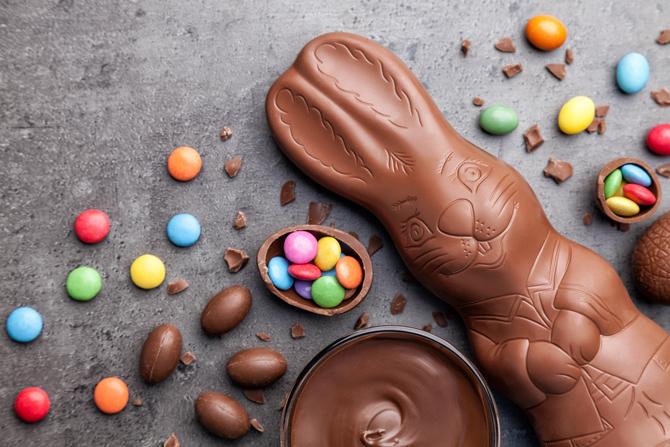Ah, chocolate! A universally adored treat, it is as much a comfort food as it is a gourmet delight.
Whether it’s dark, milk, or white, the rich, indulgent pleasure it brings is second to none.
But have you ever opened a chocolate bar, expecting to see its usual glossy brown sheen, only to be greeted with a dull, white coating?
In this post, we will look into the fascinating science behind why chocolate sometimes turns white, exploring phenomena like ‘fat bloom’ and ‘sugar bloom’.
Chocolate bloom is a white / grayish coating (or blotches or streaks) that can appear on the surface of chocolate. Although it may have an unappetizing appearance and texture, chocolate that has “bloomed” is still generally safe to eat.

Why Does Chocolate Turn White?
Chocolate turns white due to a process known as ‘blooming’.
There are two types of bloom: ‘fat bloom’, caused by changes in the fat or cocoa butter due to temperature fluctuations, and ‘sugar bloom’, caused by the reaction of the sugar in the chocolate with moisture.
Both result in a white or greyish coating on the surface of the chocolate.
Despite the change in appearance, bloomed chocolate is still safe to eat, although the texture and taste may be slightly altered.
When Chocolate Goes White, is it Safe to Eat?
Yes, when chocolate goes white, it is still safe to eat. The white appearance is due to a process known as ‘blooming’ – either ‘fat bloom’.
This occurs when the cocoa butter in the chocolate separates and rises to the surface due to temperature fluctuations, or ‘sugar bloom’, which happens when the sugar in the chocolate absorbs moisture and then crystallises on the surface.
While blooming changes the appearance and texture of the chocolate, it does not make it unsafe to consume.
However, it may alter the taste and the overall eating experience.
What is the White Stuff that appears on Old Chocolate? | Food Unwrapped
FAQ
Is chocolate OK to eat if its white?
What does it mean when chocolate turns white?
Is it OK to eat bloomed chocolate?
Can you fix chocolate that has gone white?
Is it safe to eat chocolate that has turned white?
The bottom line, it is perfectly safe to eat chocolate that has turned white due to bloom. Whether the chocolate exhibits sugar bloom or fat bloom, these changes are just cosmetic and do not affect the chocolate’s safety or flavor. Understanding the causes of chocolate bloom and storing chocolate properly can help minimize this occurrence.
Can eating white chocolate cause or help acne?
It can cause acne, as white chocolate is very high in sugars and fats, which increase inflammation in the skin. In addition, it contains less vitamins and phytochemicals than milk and dark chocolate, as it is made from cocoa butter.
Is chocolate safe to eat?
Rest assured: The chocolate is indeed safe to eat. What you see is the result of a natural reaction known as “chocolate blooming.” To learn why chocolate blooms — and what you might want to do about blooming — it helps to understand how chocolate is made.
Does chocolate have a white coating?
It’s happened to just about all of us—you open up a bar of chocolate for a treat, a bag of chocolate chips to make cookies, or a tin of homemade chocolate bark, and discover that the chocolate has a weird-looking white coating. What is that stuff? And is your chocolate still safe to eat?
